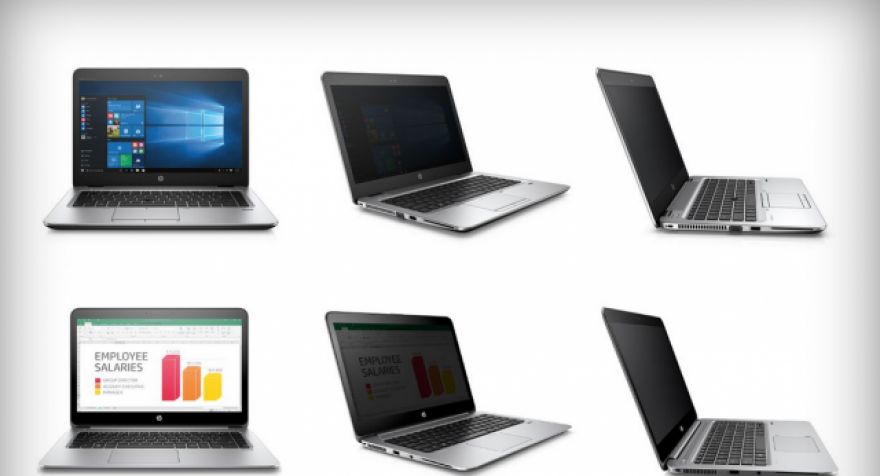
HP launches laptops with privacy-guarding displays, limited field of view
HP has announced a new set of EliteBook laptops with an adjustable privacy screen. The new technology, dubbed Sure View, will be available on both the EliteBook 840 and 1040 and can be turned on or off with the press of a button. By default, the laptop enjoys fairly wide viewing angles typical of most systems these days. Hit the button and the angle drops substantially, making the screen effectively invisible to those on either side and difficult to see even for those sitting behind you.
The new technology, developed with 3M, from aftermarket overlays and filters that have been available for years.
Right now, Sure View only works with screens based on TN (twisted nematic) panels. TN screens tend to be brighter than other laptop displays, but color accuracy isn’t their strong suit. Then again, if you’re buying a laptop for this feature you’re probably less concerned with proper color and more concerned about leaking confidential information. Early feedback on the panels has been positive from those who’ve seen them, but the new laptops won’t be available on store shelves until September (touch models) and October (non-touch screens). It’ll take careful testing to determine if the displays still function in a variety of ambient lighting situations, or to tell if the Sure View technology changes glare or impacts battery life.
It’ll be interesting to see how Sure View sells and whether or not the technology can live up to its promise. Other methods for maintaining device privacy have ranged from the comical (draping various bits of cloth around the device) to removing the polarizing filter on the display. This last method transforms the panel into a blank white sheet to anyone not wearing polarized glasses — an interesting technique, if not a particularly practical one. Consumers haven’t historically been very motivated by security, though some business people and professionals will presumably be interested in the Sure View option. Now, if we could only prevent the myriad other ways data leaks out of systems other than by the primary display — well, it’d be nice.